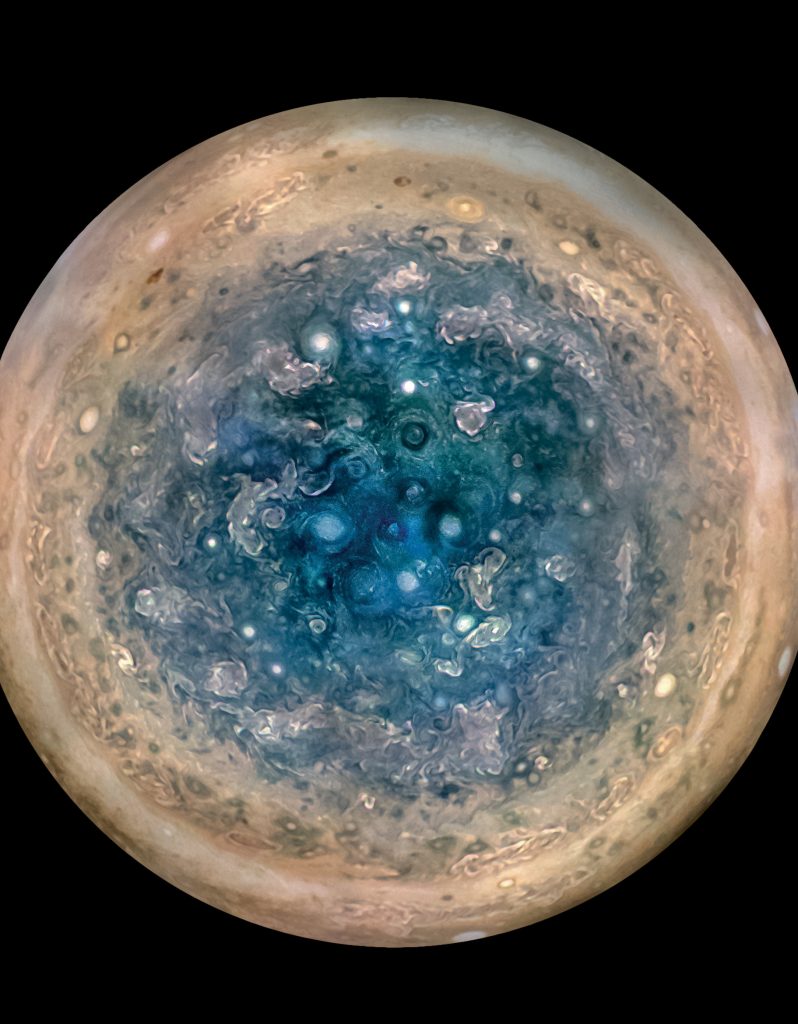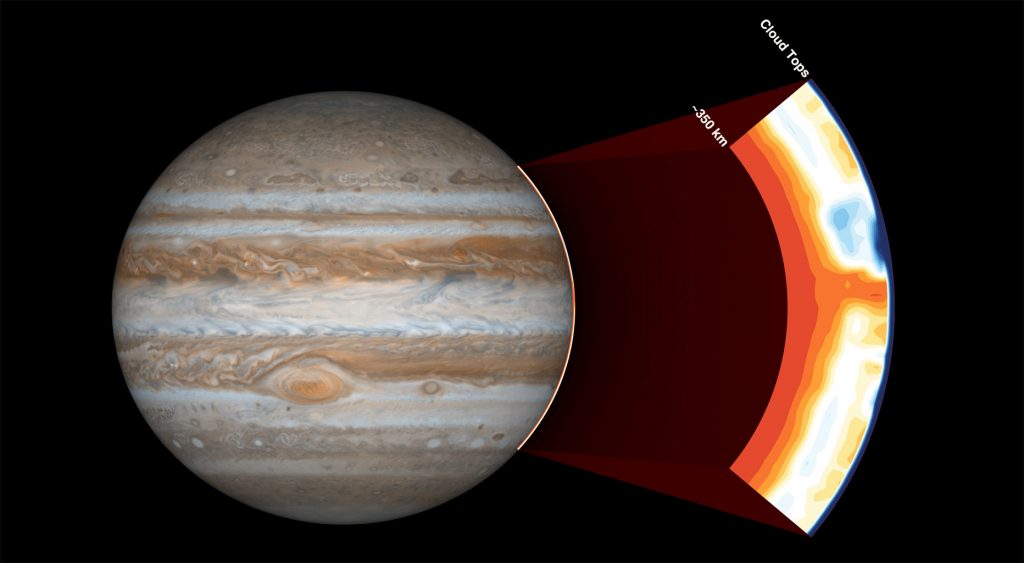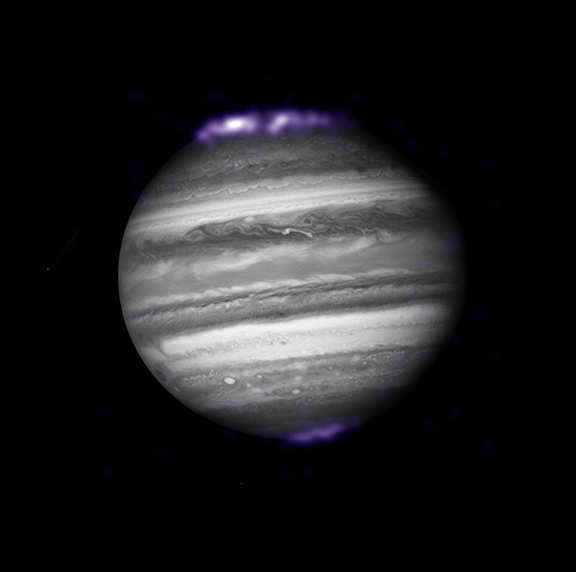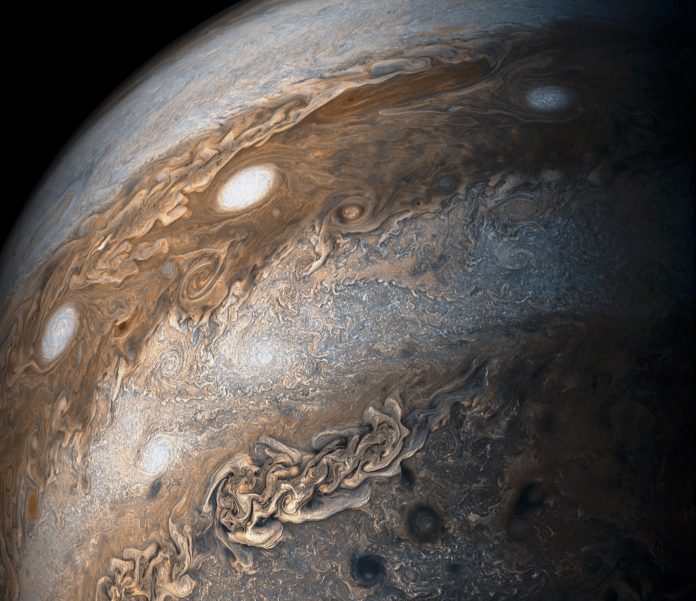July 4th marked the one year anniversary of Juno’s orbit around the planet Jupiter. With about 71 million miles (114.5 million kilometers) logged circling the globe, the NASA spacecraft has given us the closest and most detailed look into the mysteries of the gas giant we’ve ever seen.
It’s a milestone in itself but we don’t have too much time to celebrate because in just a few days Juno is scheduled to conduct its closest flyover to the planet’s surface yet. Perijove (the point at which the orbit will come closest to Jupiter) happens on Monday, July 10 and will bring Juno to within 2,200 miles (3,500 kilometers) of the planet’s cloud layer. Along the way, the basketball-sized craft will fly directly above the Giant Red Spot – the planet’s famous storm first monitored in 1830. The spacecraft will have all eight of its measuring instruments at the ready to collect data about the storm while its onboard camera, JunoCam, will be taking snapshots of the view.
It’s a packed schedule coming on the heels of an already packed year of discovery. Launched in 2011, Juno took five years to reach its subject of study and the information it’s sent back since has been a trove of new knowledge about gaseous large planets and how our solar system may have formed.
“What we’ve learned so far is earth-shattering. Or should I say, Jupiter-shattering,” said Dr. Scott Bolton, Juno’s principal investigator, in a statement. “Discoveries about its core, composition, magnetosphere, and poles are as stunning as the photographs the mission is generating.”
So just what have we learned so far? Here’s a quick run-down of the major things we’ve found out about Jupiter through this mission:
Chaotic cyclones at the poles
In one study, giant and turbulent storms were observed clustered around both Jupiter’s North and South poles. Some reached up to 850 miles (1,368 kilometers) wide – 10 times larger than Earth’s biggest cyclones. One high-altitude cloud in particular spanned more than 4,000 miles.
“It’s a towering, almost tornado-like structure,” Bolton said, according to Yahoo News. “It’s a cyclone of some kind, but it’s three-dimensional.”

A plume of ammonia at the equator
Juno beamed microwaves deep into the atmosphere to take a peek at what might be happening just under Jupiter’s ammonia cloud tops. What it found was a narrow ammonia band of plumes welling up from the equator to create violent weather systems. Scientists like it to Earth’s Hadley Cell where hot air rises up at the equator to create trade winds.

A shape-shifting magnetic field
Researchers were long aware of the enormity of Jupiter’s magnetic field in relation to everything else in our solar system. But what they weren’t prepared for was just how dynamic it would turn out to be. In the area Juno measured, the field turned out to be 10 times more powerful than Earth’s – ticking in at 7.766 Gauss compared to Earth’s 0.66 Gauss at the South Pole. It’s also got an uneven, lumpy distribution where some parts are stronger than others. Researchers suspect this is due to processes originating closer to the planet’s surface than its core.
Auroras that operate nothing like Earth’s
Here on Earth, the Northern and Southern lights happen when deadly radioactive particles from the sun hit our magnetic field and get channeled toward the North or South pole. But the process looks completely different for the auroras taking place on Jupiter. Rather than get sucked down toward the poles, the radioactive electrons are getting pushed out of the polar regions.
“Although many of the observations have terrestrial analogs, it appears that different processes are at work creating the auroras,” said Dr. Phil Valek, instrument lead for the Jovian Auroral Distributions Experiment (JADE) which measures Jupiter’s auroras.
“With JADE we’ve observed plasmas upwelling from the upper atmosphere to help populate Jupiter’s magnetosphere. However, the energetic particles associated with Jovian auroras are very different from those that power the most intense auroral emissions at Earth.”

Fuzzy on the inside
Old assumptions are being challenged on what Jupiter’s core could look like. Using magnetic field measurements as well as readings about the planet’s gravity field, Juno observed some deep rumblings coming out of Jupiter’s depths. The initial findings suggest Jupiter may have a “large, fuzzy core” underneath a layer of metallic hydrogen. Of course, more measurements and studies are needed before researchers can form a clearer understanding of what Jupiter’s center really looks like.











